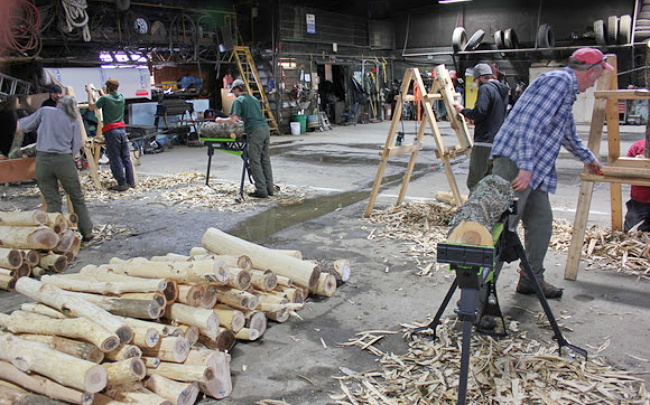
The year 2018 was significant for Maine with respect to the emerald ash borer (EAB). Not only was this invasive wood-borer found in the far northern corner of Aroostook County in the spring, it was also found in southern York County in the fall.
Officials will convene a public hearing at 6:30 p.m. on Monday, Feb. 11, at the DACF office, 45 Radar Rd., Ashland, to discuss the EAB quarantine rule. The joint hearing will also address a rule change regarding the gypsy moth.
A second public hearing is planned Feb. 13 in Springvale.
Currently, the towns of Madawaska, Frenchville and Grand Isle in Aroostook County and Acton, Lebanon, Berwick, and Shapleigh in York County are under an Emergency Order to stop the movement of certain ash products and untreated hardwood firewood.
Gary Fish, state horticulturist and state plant regulatory official, has worked to develop a state quarantine, in consultation with the Maine Forest Service (MFS), according to a press release issued Jan. 8 by the Maine Department of Agriculture, Conservation and Forestry.
After EAB was found in Madawaska along the St. John River, the Forest Service deployed approximately 100 purple prism traps in the towns surrounding the initial find. This was supported by funding from the United States Department of Agriculture, Animal and Plant Health Inspection Service, Plant Protection and Quarantine (USDA-APHIS-PPQ). EAB were found on four traps within two miles of the original find, in Madawaska and the neighboring town of Frenchville.
In addition, a single EAB was found on each of two traps in the town of Grand Isle, approximately 11 and 15 miles distant. Canadian surveys uncovered additional infested trees around the detection in Edmundston and a single EAB was found on a trap in Ste. Anne de Madawaska, NB, just across the river from Grand Isle. Branch samples and whole trees near the positive traps in Grand Isle were peeled, but no EAB have yet been found in any tree in that town.
Twenty-nine ash trees in Madawaska and surrounding towns were girdled in June by MFS and volunteers. These were peeled in November 2018. All trees were negative for EAB except for a single tree within half a mile of the original find. Girdled trap trees from other parts of the state will be peeled later this winter.
In southern York County, a single EAB was found in each of Acton and Lebanon on USDA-APHIS-contractor managed traps. Although MFS followed up with branch samples and whole tree dissections, no sign of EAB has yet been found in trees in those towns.
In the new year, stated the release, the MFS will continue to monitor for EAB.







